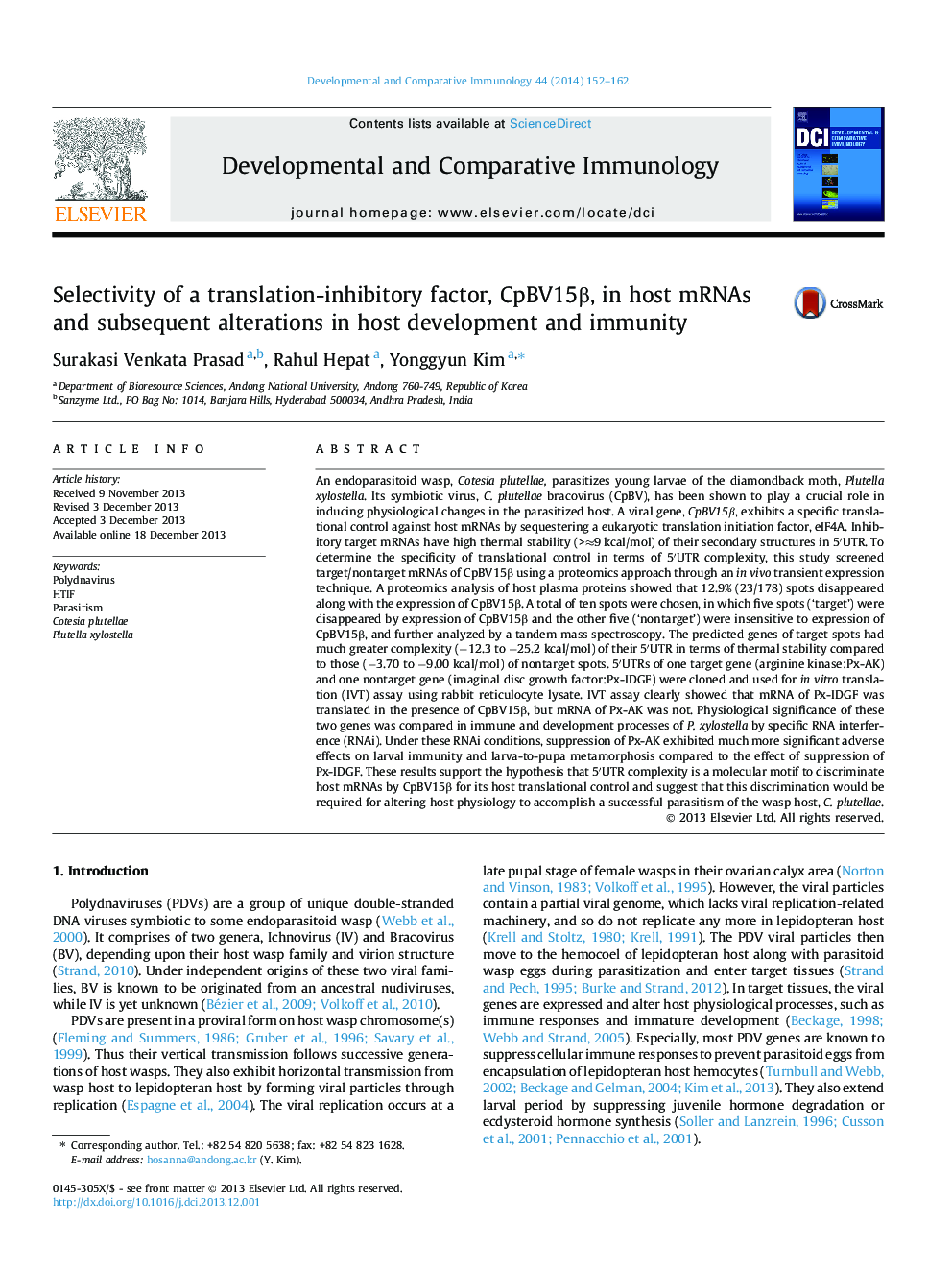| کد مقاله | کد نشریه | سال انتشار | مقاله انگلیسی | نسخه تمام متن |
|---|---|---|---|---|
| 2429259 | 1106486 | 2014 | 11 صفحه PDF | دانلود رایگان |

• CpBV15β is a host translation inhibitory factor.
• A proteomic analysis suggests that CpBV15β discriminates mRNAs to be inhibited.
• Target mRNAs of CpBV15 β are associated with host immunity or development.
An endoparasitoid wasp, Cotesia plutellae, parasitizes young larvae of the diamondback moth, Plutella xylostella. Its symbiotic virus, C. plutellae bracovirus (CpBV), has been shown to play a crucial role in inducing physiological changes in the parasitized host. A viral gene, CpBV15β, exhibits a specific translational control against host mRNAs by sequestering a eukaryotic translation initiation factor, eIF4A. Inhibitory target mRNAs have high thermal stability (>≈9 kcal/mol) of their secondary structures in 5′UTR. To determine the specificity of translational control in terms of 5′UTR complexity, this study screened target/nontarget mRNAs of CpBV15β using a proteomics approach through an in vivo transient expression technique. A proteomics analysis of host plasma proteins showed that 12.9% (23/178) spots disappeared along with the expression of CpBV15β. A total of ten spots were chosen, in which five spots (‘target’) were disappeared by expression of CpBV15β and the other five (‘nontarget’) were insensitive to expression of CpBV15β, and further analyzed by a tandem mass spectroscopy. The predicted genes of target spots had much greater complexity (−12.3 to −25.2 kcal/mol) of their 5′UTR in terms of thermal stability compared to those (−3.70 to −9.00 kcal/mol) of nontarget spots. 5′UTRs of one target gene (arginine kinase:Px-AK) and one nontarget gene (imaginal disc growth factor:Px-IDGF) were cloned and used for in vitro translation (IVT) assay using rabbit reticulocyte lysate. IVT assay clearly showed that mRNA of Px-IDGF was translated in the presence of CpBV15β, but mRNA of Px-AK was not. Physiological significance of these two genes was compared in immune and development processes of P. xylostella by specific RNA interference (RNAi). Under these RNAi conditions, suppression of Px-AK exhibited much more significant adverse effects on larval immunity and larva-to-pupa metamorphosis compared to the effect of suppression of Px-IDGF. These results support the hypothesis that 5′UTR complexity is a molecular motif to discriminate host mRNAs by CpBV15β for its host translational control and suggest that this discrimination would be required for altering host physiology to accomplish a successful parasitism of the wasp host, C. plutellae.
Journal: Developmental & Comparative Immunology - Volume 44, Issue 1, May 2014, Pages 152–162